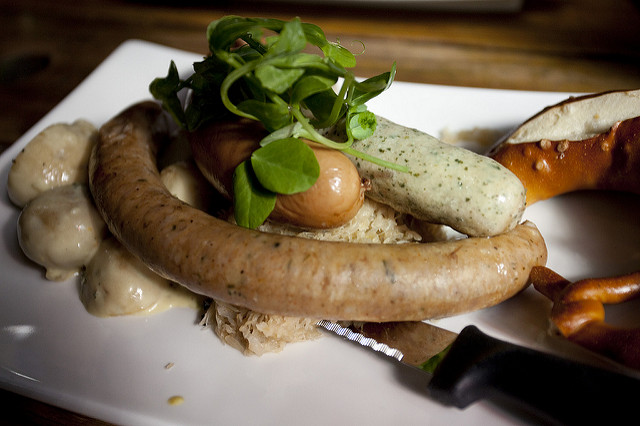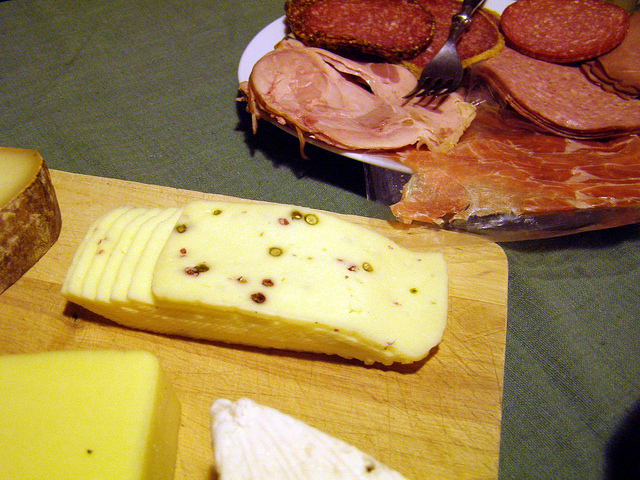Travel


- Local African Delicacies To Die For
One of the best things about travelling is sampling local dishes and trying out different ways of eating. African cuisine features fresh local ingredients. In fact, fruit and vegetables play an essential role in the diets of African people. Naturally,...
- Traditional Nuremberg. Steichele Hotel & Weinrestaurant
We love it when we stumble upon something that is clearly off the beaten path. Or something that is rather a well guarded local secret. And this is precisely how we felt in Nuremberg, while staying at Steichele Hotel & Weinrestaurant. The hotel...
- 5 Reasons Why Oberstdorf In Germany Is A Must See Destination
Oberstdorf in Germany is one of the most magical little towns in all the world. Nestled in the German Alps and located near the Austrian border, Oberstdorf harkens back to a preindustrial age of fine craftsmanship and true kinship between humanity and...
- The Magic Of The Christmas Markets In Germany
Christmas markets originated in Germany in the Late Middle Ages and they are a great way to get into the Christmas spirit. I love this time of the year and as the weather gets colder, I'm already switching to a festive mood. Hundreds of Christmas...
- Photo Of The Day: A Sea Of Poppies
A sea of poppies in the German countrysideIt's hard to imagine this kind of sceneries exist outside the pictures. Yet, this is how the real world German countryside looks like and Flickr user redstarpictures knows it best! The random sunlit...
Travel
5 Ways to Fall in Love With German Food
German food is typically thought of as comfort food. Meat and potatoes are the perceived basis of all German meals and most people think “heavy and fried” when they think of German food. While there is some truth to the hearty nature of traditional German fare, the country’s culinary offerings are far more varied and surprising than the common image conjures.
It’s true that you’ll find the country’s famous pickled cabbage — sauerkraut — in many dishes, but you’ll also find delightfully fresh, light ingredients you might not expect. Visitors to Germany often rediscover German food and fall in love with the country’s quirky, satisfying and diverse range of foods. From restaurants and Frankfurt Hotels to countryside bed-and-breakfasts, delightfully surprising meals are served across the country. Here are five ways that German food might entice, enchant and satisfy you.
It’s true that you’ll find the country’s famous pickled cabbage — sauerkraut — in many dishes, but you’ll also find delightfully fresh, light ingredients you might not expect. Visitors to Germany often rediscover German food and fall in love with the country’s quirky, satisfying and diverse range of foods. From restaurants and Frankfurt Hotels to countryside bed-and-breakfasts, delightfully surprising meals are served across the country. Here are five ways that German food might entice, enchant and satisfy you.

1. Deliciously Light Breakfasts
Perhaps you’re imagining that the typical German breakfast consists of mostly fried sausage and potatoes. While in many households, bratwurst certainly finds its way to the morning table, the typical German breakfast is — in actuality — quite light. In most households and at restaurants throughout the country, you can enjoy a light breakfast of a fried egg accompanied by traditional muesli cereal drizzled with a bit of farm-fresh cream. Fresh fruit often accompanies the simple yet filling breakfast fare. Another breakfast favorite in Germany is cold cuts served with traditional German dark rye bread.
2. Indulgent, Luscious Lunches
Throughout Germany, lunch is generally the largest meal of the day. Served in the early afternoon, the German lunch is generally heartier and richer than other meals. A German lunch is likely to include weisswurst, a typical Bavarian sausage specialty, served with hearty tomato- or potato-based soup. Sandwiches featuring German cold cuts are favored at lunch, and you might enjoy a Black Forest ham sandwich with a side of sauerkraut and German potato salad. Old World–style sausages of several varieties are likely to grace your German lunch plate including knackwurst and Polish sausage. Another Old World favorite, egg-noodle spätzle is a common lunchtime side dish. Breads used for lunchtime are usually rye, which has been cultivated in Germany since the middle ages and celebrated for its robust taste and the durability of its grain.

3. Revel in Regional Variation
The typical dishes of Germany, such as bratwurst with sauerkraut, can have many unique regional variations. From cooking technique to spices and side dishes, you can expect a wide variety of regional differences. The simple recipes take on a unique twist depending on where in Germany you are and whether you are in an urban or rural area. Some of the top chefs in Germany’s larger cities cook up their own creative versions of Old World favorites, while some of the rural towns will feature truly traditional authentic German fare.
4. Take a Kaffee Break!
The kaffee break is Germany’s version of tea time. Usually occurring sometime between lunch and dinner, a kaffee break is just what it sounds like — time for coffee, relaxation and treats. Kaffee-break fare includes various coffee drinks including mochas and lattes served with decadent German pastries. Homemade apple strudel is often a part of kaffee break time as are sweet and savory tortes. Other traditional German pastries include cheese pockets, berliners, custard puffs and various fruit strudels. Freshly baked, fluffy German pretzels are often served with the hot drinks, as are kaiser rolls, pound cake, Black Forest cake and world-famous German chocolate cake.
5. Get Some German Grilling Greatness
It’s not only Americans who enjoy summertime barbeques. Germans are extremely fond of the art of grilling meat when the warm weather hits. Barbequing offers opportunities to socialize while grilling meat to perfection. A German barbeque might consist of spicy char-grilled sausages served alongside a freshly prepared potato salad, with a hefty side of pungent mustard. Great pride is taken in the process of grilling the famous traditional sausages of Germany, and barbeque competitions can be found popping up all over the country come summertime.
About the Author: Louise Vinciguerra is a fantastic joke teller, has a million and one hobbies, and enjoys matching her fonts with her moods. When she’s not on Facebook or Twitter, she’s traveling in search of fun food, dabbling in urban farming or planning nature trips from her resident city of Rome. When she’s not doing any of the above, she sleeps.
Photos by No Dust, erix! & jeredb via Flickr Creative Commons
Photos by No Dust, erix! & jeredb via Flickr Creative Commons
- Local African Delicacies To Die For
One of the best things about travelling is sampling local dishes and trying out different ways of eating. African cuisine features fresh local ingredients. In fact, fruit and vegetables play an essential role in the diets of African people. Naturally,...
- Traditional Nuremberg. Steichele Hotel & Weinrestaurant
We love it when we stumble upon something that is clearly off the beaten path. Or something that is rather a well guarded local secret. And this is precisely how we felt in Nuremberg, while staying at Steichele Hotel & Weinrestaurant. The hotel...
- 5 Reasons Why Oberstdorf In Germany Is A Must See Destination
Oberstdorf in Germany is one of the most magical little towns in all the world. Nestled in the German Alps and located near the Austrian border, Oberstdorf harkens back to a preindustrial age of fine craftsmanship and true kinship between humanity and...
- The Magic Of The Christmas Markets In Germany
Christmas markets originated in Germany in the Late Middle Ages and they are a great way to get into the Christmas spirit. I love this time of the year and as the weather gets colder, I'm already switching to a festive mood. Hundreds of Christmas...
- Photo Of The Day: A Sea Of Poppies
A sea of poppies in the German countrysideIt's hard to imagine this kind of sceneries exist outside the pictures. Yet, this is how the real world German countryside looks like and Flickr user redstarpictures knows it best! The random sunlit...
